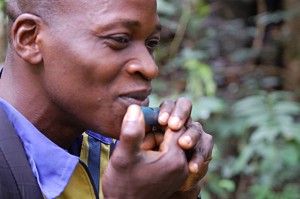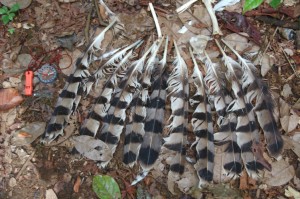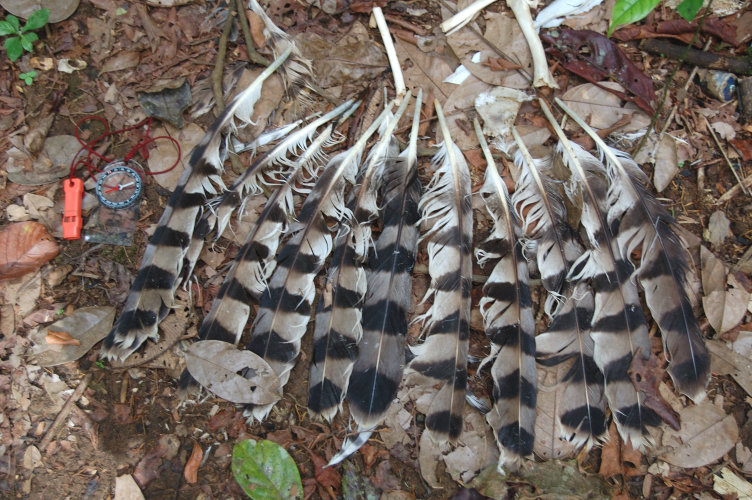Potential decline of large raptors as a consequence of the commercial trade in bushmeat in the Ebo forest, Cameroon

The Ebo forest in southwestern Cameroon covers over 1500km2 of mountainous mixed evergreen and deciduous forest and basalt outcrops. The challenging terrain has limited the extent of both timber exploitation and, until recently, the worst ravages of the commercial trade in bushmeat. Consequently, the forest retains a relatively intact fauna.Raptors known to be present in the Ebo Forest include the little-known Congo serpent eagle, long-tailed hawk, crowned eagle, Cassin’s hawk eagle and several accipiters.
We have recently discovered that large raptors are often consumed by hunters while camping in the forest. Two eagle carcasses (one juvenile crowned eagle and the other probably a juvenile Cassin’s hawk-eagle) were discovered in separate hunting camps. Informal interviews with local hunters suggest that hunting and eating raptors (especially crowned eagles, palm nut vultures and Cassin’s hawk eagles) is not uncommon when hunting other species (mammals and reptiles) in the forest. The birds have little commercial value which makes them an ideal source of protein for the hunters themselves, who prefer not to eat the more valuable meat.
Various methods are used by the hunters to attract the birds, including imitation of a crowned eagle call. This is done by blowing into a small hole cut in the side of a used shotgun cartridge while the open-end of the cartridge is partially opened and closed with the thumb to alternate between two tones. This call is commonly used by hunters to locate concealed monkeys; adult males of several species will sound an alarm in response to the mimicked eagle call. Local hunters suggest the call is so good that it attracts resident crowned eagles to within shotgun range. Mimicking a distressed blue duiker call (without use of an empty cartridge shell) can also attract large raptors. According to hunters, palm-nut vultures are particularly easy to attract in this way. This was demonstrated to one of us (RW) in the field and a juvenile palm-nut vulture approached the call.
We intend to carry out further research on the distribution and status of the raptors in Ebo Forest and to survey hunting camps for the remains of raptors in the coming months. Crowned-eagles do not appear to be as abundant as elsewhere in the region, and this vocal species was not heard during three months of fieldwork, although an inactive nest was recently discovered and this will be monitored in the coming year.
Whytock, R.C. & Morgan, B.J.
1 Ebo Forest Research Project, BP 3055, Messa, Yaoundé. Email: Robbie@eboforest.org
2 Zoological Society of San Diego, BP 3055, Messa, Yaoundé. Email: bmorgan@sandiegozoo.org





